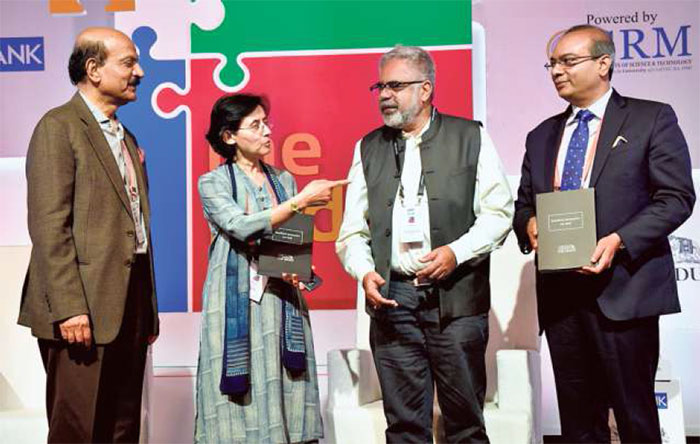Some of the best minds in business discuss how to mould Reforms 2.0, moving beyond just economic statistics

Policymakers and industry should now focus more on the execution of plans and addressing structural issues than merely announcing incentives and sops to encourage economic growth in India. While the first wave of economic reforms led to GDP growth, the real challenge now is to make the growth more broadbased to cover sectors such as agriculture, education, and healthcare.
This was the sum and substance of the panel discussion on “Reforms: time for Version 2.0,” moderated by Raghavan Srinivasan, Editor, BusinessLine.
“When 50% of the world’s stunted children live in India and if indeed there is 15% or 16% reported unemployment then these are not good statistics. In economic terms. Yes we’ve got a pretty decent rate of growth of 7.5% over the past decade or so, but relying merely on GDP growth may not be enough as it just measures one sliver of a nation’s development,” Vinita Bali, former managing director of Britannia Industries Ltd, said.
Minimal government
Keshav Murugesh, group chief executive offi_cer, WNS Global Services, said the dependence on government incentives and policies should be minimal. “We didn’t wait for sops and reforms. We created a business out of what no one wanted to do. Today, there are 17,000 companies, 1.3 million employees directly involved, $37 billion of revenue,” Mr. Murugesh said, talking about the growth in the business process outsourcing sector.
B.V.R. Mohan Reddy, founder and executive chairman, Cyient, said incentives alone were not going to help industries grow. “We need infrastructure and talent. There’s a disaster waiting to happen in the education space. There are 16.87 lakh seats available across engineering institutes in the country of which only 51% were taken by students and the employability is not more than 3132%. That’s a big disappointment,” Mr. Reddy said. “There has to be some intervention here, starting with improving the faculty.”
Mr. Srinivasan said while the basic philosophy behind the first wave of reforms was to ensure the share of manufacturing in GDP grew substantially, which in turn created more jobs, the real problem was being faced by the agricultural sector in terms of remunerative pricing for farmers.
Agreeing with this observation, Ms. Bali said, “We are spending too much time solving the problems of the rich. The software industry, which we are all proud of employs 34 million people, but there are 35 million weavers who have no voice.”
Job creation
Commenting on the policies to encourage the startup ecosystem, Mr. Murugesh said to focus on startups was good as it indicated the shift in thought from looking for a job to creating jobs.
Ms. Bali said the focus should shift from startup to scale up to fundamentally change the ecosystem.
“We need to build capabilities that deliver on a plan. Otherwise, we have money chasing startups and not scaleups due to which capital productivity is low. We also have to start thinking in terms of return on labour just as much as we think about return on capital.”